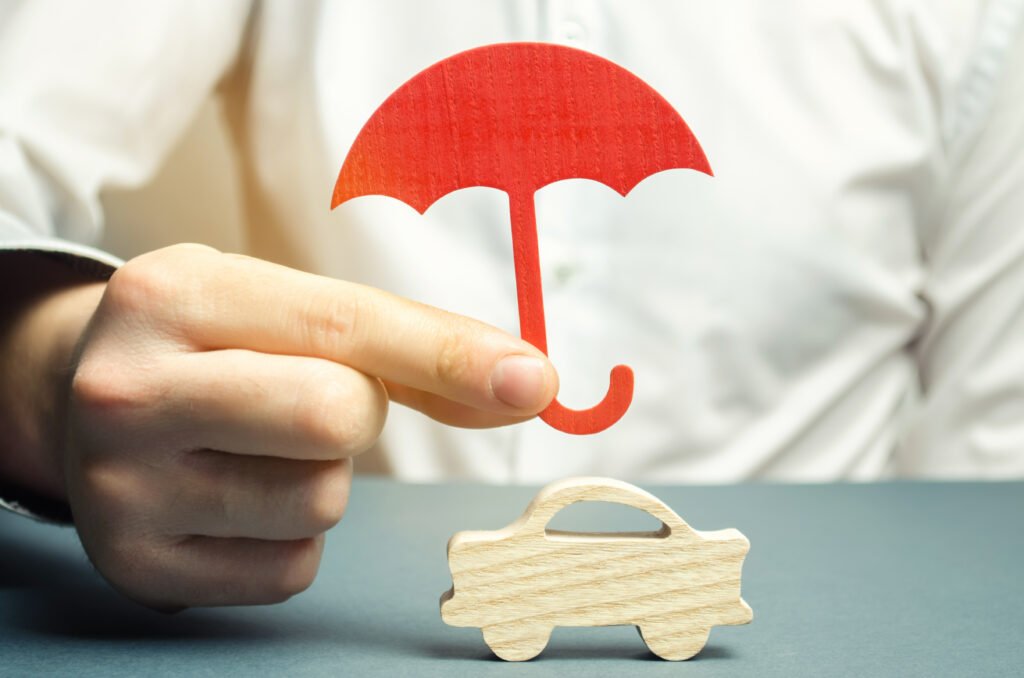Did you get into an accident? If you live in a “no-fault” state, how you handle the aftermath of your accident might be a bit different than usual. No-fault insurance, or personal injury protection (PIP), will cover your injuries from an accident regardless of who’s at fault. This is different from other types of insurance, such as liability or collision, that only kick in depending on who’s at fault.
In this article, we’ll explain the basics of no-fault coverage. This includes a breakdown of the following:
- What it is
- No-fault states
- Who might need to buy it
- What it does and doesn’t cover
- How much it costs
- How much to buy
- Frequently asked questions
What Is No-Fault Insurance?
No-fault insurance pays for any injuries you or your passengers suffer in an accident. You’ll receive coverage no matter who’s at fault in the accident. Insurers often refer to no-fault coverage as personal injury protection, also known as PIP. This is what your insurer will typically offer when you go to buy “no-fault” insurance.
No-fault states require drivers to file a claim with their insurer after an accident occurs. So, they must file even if they were the ones at fault. That is to say, a PIP claim must be filed. PIP isn’t mandatory in most states, but you should check your state’s bare bare minimum requirements to be sure.
No-Fault vs. Personal Injury Protection (PIP)
No-fault coverage and PIP can be a bit confusing. Most insurers will describe the two as being the same thing. This is because PIP is what no-fault states usually require. It’s also what’ll pay for your injury costs, regardless of fault.
What Are No-Fault States?
No-fault states require drivers to buy insurance to pay for their injuries and medical bills from an accident regardless of fault. So, if you live in one of these states, you’ll need to buy PIP. No-fault states also require drivers to file a claim with their insurer, no matter who caused the accident.
States That Require PIP
Surprisingly, no-fault car insurance is mandatory in only 16 states. However, some states require medical payments coverage (MedPay) instead of PIP. Below are the states that require you to carry no-fault coverage/PIP on your policy:
- Arkansas
- Delaware
- Florida
- Hawaii
- Kansas
- Kentucky
- Maryland
- Massachusetts
- Michigan
- Minnesota
- New Jersey
- New York
- North Dakota
- Oregon
- Pennsylvania
- Utah
States That Make PIP Optional
While the states above may require no-fault coverage, these aren’t the only ones that offer it. Fortunately, some states allow the driver to decide whether or not they’d like to add it to their policy. Below are the states where no-fault or PIP is available:
- District of Columbia
- New Hampshire
- South Dakota
- Texas
- Virginia
- Washington
- Wisconsin
If your state doesn’t require no-fault, you may want to consider a couple of things. First, if you have MedPay, you either may not be able to have no-fault/PIP or you won’t need it. Also, your health insurance policy may not cover as much as PIP or MedPay. And finally, how much risk are you comfortable with? Medical costs can be crippling without proper coverage.
What No-Fault Insurance Covers
No-fault insurance covers many different medical expenses and injuries that you or your passengers suffer from an accident. Here’s a list of what it covers:
- Lost income and wages
- Health insurance deductibles
- Any costs that go over health insurance limits
- Funeral costs
- Essential services (things you can’t do or perform due to injury, such as child care)
What It Doesn’t Cover
PIP covers a wide range of expenses. However, the constant is that they’ll always relate to injuries and damage to the passengers. Below are some examples of what PIP doesn’t cover:
- Damage to another person’s property. This refers to any physical object e.g., buildings, light posts, fences, etc.
- Damage to your car and damage to the other party’s car
- Medical bills that exceed your coverage limits
- Injuries on farm equipment, mopeds, off-road vehicles, and motorcycles
- Intentional injuries
- Injuries that a person sustains while committing a felony
PIP covers any expenses that relate to accidental injuries and medical bills. All other damages fit under other forms of auto coverage, such as liability and comprehensive.
Per the Washington state insurance commissioner, PIP covers anything insurers deem as:
- Reasonable
- Necessary
- Directly part of the accident
- Within three years of the accident in question
Everything else, however, is not part of the coverage. So, be sure to ask your insurer if you’re unsure about whether they’ll pay for a certain expense.
No-Fault Insurance Cost
The cost of PIP can, of course, vary depending on your provider. In addition, your rates will also vary depending on several factors. These factors are small details about you that’ll tell your insurer whether you’re a risk for filing claims. Common rate factors include:
These aren’t the only factors that affect your premium, but they’re some of the biggest ones. Knowing what impacts your rates most can help you save money in the long run.
Each insurer will offer a unique rate to you. So, it’s always a good idea to compare quotes to find the best price.
Buy as Much as You Can Afford
After deciding to buy PIP, it’s best to have an idea of exactly how much coverage you want. Because no-fault or PIP is mandated in certain states, it’s important to check your state’s minimum requirements
Often, your state’s minimum coverage won’t be enough to cover all of the expenses in an accident. The general rule of thumb is to buy as much insurance as you can afford. Medical expenses can be very expensive after an accident. So, while you may also have MedPay, PIP can help cover other expenses, like lost wages.
Frequently Asked Questions
What’s the difference between no-fault insurance and PIP?
Personal injury protection (PIP) is the type of coverage that no-fault states require. These states require drivers to purchase it to pay for their injuries. In this case, PIP is the option that states require because it covers injuries regardless of fault.
What does no-fault insurance mean?
No-fault insurance covers drivers in an accident no matter who was at fault. It refers to personal injury protection or PIP. Drivers must carry it in no-fault states. You do, however, have some say in how much PIP coverage you purchase.
Can I sue the other driver to help pay for my injuries?
In some cases, you can sue for more money to help pay for your injuries. To do this, your case must meet a certain set of conditions, per the Insurance Information Institute (III). This set of conditions is the tort liability threshold, and it evaluates whether or not a person’s injuries are severe enough to sue for more money (dismemberment, death, etc.).
Do I need both MedPay and PIP?
The quick answer is that you don’t have to buy MedPay on top of PIP. There are some states, however, that may require it. On the other hand, it may be a good idea to have both. MedPay covers much of your expenses after an accident, including doctor visits, ambulance rides, and prosthetics. But PIP covers many things such as lost wages and health deductibles.
Carrying both types of coverage on your policy can help greatly in dealing with expensive medical costs.
How does filing a no-fault claim work?
No-fault claims are usually personal injury protection claims. You would file the claim with your insurer to pay for any injuries to you or your passengers. Some of these costs, for example, may include:
- Lost wages
- Medical bills
- Funeral expenses
In rare cases, you may sue for more damages. In these situations, injuries must be severe enough to meet your state’s threshold. Dismemberment, death, and broken bones are common examples of severe enough injuries to meet the threshold.
Finally, it’s important to follow your insurer’s rules and policies. Doing so will ensure you get the best result possible. This could be filing the claim within the time limit, having an examination from a doctor, or giving a witness statement.


